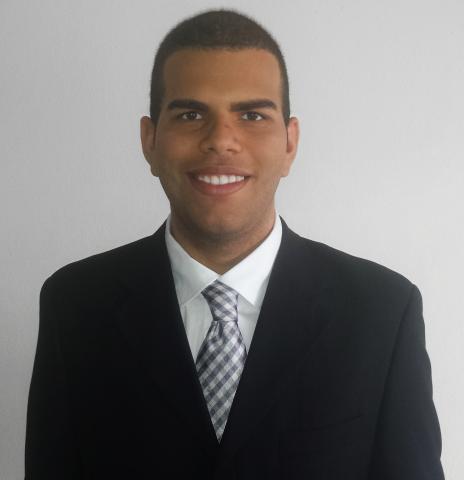ECE Ph.D. student Adrian Ildefonso received the Outstanding Paper Award at the 2018 Nuclear and Space Radiation Effects Conference (NSREC).
Adrian Ildefonso received the Outstanding Paper Award at the 2018 Nuclear and Space Radiation Effects Conference (NSREC). Held July 16-20 in Kona, Hawaii, the IEEE NSREC is the largest international forum for the presentation of advances in radiation effects in electronic devices, circuits, and systems. Since 2006, NSREC has awarded separate accolades for outstanding papers: one reserved for student submissions and one for the best overall conference paper. Since this distinction was instituted, this is only the second time that a student has been awarded the overall Outstanding Paper Award.
Ildefonso is a Ph.D. student in the Georgia Tech School of Electrical and Computer Engineering (ECE), where he is advised by John D. Cressler, the Schlumberger Chair Professor in Electronics.
The paper, “Optimizing Optical Parameters to Facilitate Correlation of Laser- and Heavy-Ion-Induced Single-Event Transients in SiGe HBTs,” was co-authored with Z.E. Fleetwood, G.N. Tzintzarov, J.M. Hales, D. Nergui, M. Frounchi, A. Khachatrian, S.P. Buchner, D. McMorrow, J.H. Warner, J. Harms, A. Erickson, K. Voss, V. Ferlet-Cavrois, and J.D. Cressler. This work, which was done in collaboration with the Naval Research Laboratory in Washington D.C., explores the use of pulsed lasers to emulate the effects of the space environment on electronic devices, circuits, and systems.
When energized particles in space, such as ionized heavy ions, traverse electronic systems, they deposit charge, which can generate voltage and current glitches. These glitches, known as single-event transients, can impact the proper operation of spacecraft. To ensure that these effects are not catastrophic, extensive testing is done with the use of particle accelerators. These facilities, however, are fairly expensive and can have limited availability. Thus, pulsed lasers have emerged as a complementary tool to accelerator testing, as they are more accessible and can provide more information than is attainable through traditional heavy ion test campaigns.
One of the big questions in this field is: “How can we best reproduce the effects of ions by using pulsed lasers?” This paper presents a methodology to obtain quantitative agreement between ion and laser data by optimizing the optical parameters of the laser system. The results show that, with optimized parameters, one can effectively use a pulsed laser to reproduce the transients generated by heavy ions in the studied semiconductor technology. These results are meaningful, as they allow for the use of pulsed lasers to emulate ions encountered in space and predict their effect on space systems. The generality of the presented approach allows for it to be extended to other semiconductor platforms and could be used to qualify electronics for use in future space systems.
A full-length journal paper based on this conference presentation has already been accepted for publication in the IEEE Transactions on Nuclear Science and will be published in a special issue of the journal in January. This work was supported by the Defense Threat Reduction Agency under contract HDTRA1-16-1-0018, by the National Science Foundation Graduate Research Fellowship under Grant No. DGE-1650044.
